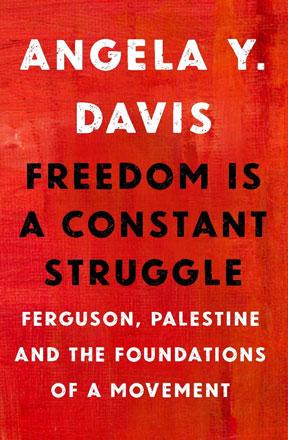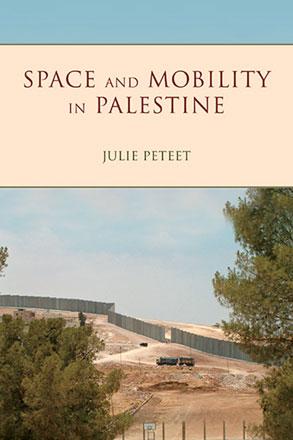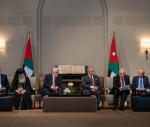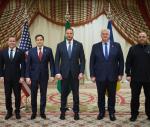You are here
Occupied Palestine — Israel’s real-life laboratory
By Sally Bland - Nov 08,2015 - Last updated at Nov 08,2015

War Against the People: Israel, the Palestinians and Global Pacification
Jeff Halper
London: Pluto Press, 2015
Pp. 340
The myriad of facts and insights contained in Jeff Halper’s new book are nothing short of mind-boggling. While one may be familiar with the origins and development of the Israeli arms industry, “War against the People” covers the exponential expansion and diversification of its production and sales to become a humongous network reaching every corner of the world. Crucially, Israel has not simply increased, but qualitatively retooled its weapons manufacturing to match evolving global conditions.
Halper is an anthropologist and anti-occupation activist who heads the Israeli Committee Against House Demolitions. As he points out, human rights activists like himself have not focused on the details of how armaments and security systems work. Yet, as he began wondering how Israel gets away with continuing the occupation of Palestine despite the international community’s professed opposition, he found the answer in its military industries. In short, Israel has succeeded in turning its military and security prowess into political influence by using occupied Palestine as a laboratory for testing new weapons, security and surveillance systems and counter-insurgency tactics, selling these to others, from the US to China. As countries benefit from Israeli goods and expertise in such vital fields, supportive political relations usually evolve and the beneficiaries are less likely to vote against Israel at the UN, for example.
What Halper terms securitisation means securing global capitalism, ensuring the flow of capital, resources, and being able to deal with resistance. With the ever-widening gap between rich and poor, escalated by neoliberal privatisation and cutbacks in public services, resistance is increasing. While inter-state wars are becoming less frequent, they have been replaced by civil wars, asymmetrical wars involving non-state actors, insurgency and counter-insurgency, or a combination of the above.
“In these conflicts, that admittedly can’t be won and which entail prolonged periods of occupation, core militaries are by necessity being ‘policized’.” (p. 24)
Meanwhile, police are becoming more militarised, even in countries that espouse democracy. The aim is not so much victory as pacification of whatever forces challenge the status quo, whether Palestinians under occupation, slum dwellers in Brazil who are “in the way” of gentrification, impoverished Africans caught in a struggle over scarce resources, or marginalised ethnic or religious communities. As Halper points out, civilian casualties predominate in such warfare that is fought in urban areas, “among the people”.
Pacification involves standard armed forces, but police, security agencies, elite forces, paramilitaries and prison systems assume pivotal roles. Israel has all these types of forces, much experience in this kind of permanent conflict, battle-tested weapons, and security and surveillance technology that other countries need—all by virtue of continuing the occupation. From this angle, the occupation is a major source of profit and political clout, giving Israel zero incentive to seek a solution with the Palestinians.
To prove these points, Halper painstakingly shows how Israel reached its status as the most militarised country in the world and the seventh largest arms exporter, tracing the development of its battle and security doctrines and major weapons systems. He applies a precise analysis to subjects that are often oversimplified, such as how Israel manages to maintain its strategic relations with major imperialist powers, chiefly the US, but also leverages its prerogative to act independently. Subsequent chapters describe the nuts and bolts of Israel’s military and security cooperation with countries around the world.
Central to his analysis of how Israel successfully markets its model of long-term pacification, Halper outlines what he calls the Matrix of Control derived from military rule over the Palestinians since 1948, controlling every aspect of their lives with laws, military orders, repression and surveillance — whether by drones or nanotechnology, in between unleashing rounds of overwhelming military force. It is here that the descriptions of advanced surveillance technology are truly mind-boggling, far too complicated to be covered in this review, and very scary in terms of how such devices disrupt and endanger, not only people’s privacy, but undermine their humanity and lives.
However, Halper’s intent is not to scare. He believes that pacification and “war against the people” can be resisted but first progressives must put this misuse of technology on their agenda. In the meantime, his analysis is very useful for understanding not only the ongoing occupation of Palestine, but also the other wars raging in this area, where the Israeli role is only indirect, but nonetheless influential.
Related Articles
Decolonising Israel, Liberating Palestine: Zionism, Settler Colonialism, and the Case for One Democratic StateJeff HalperLondon: Pluto Press
Freedom is a Constant Struggle: Ferguson, Palestine and the Foundations of a MovementAngela Y. DavisChicago: Haymarket Books, 2016Pp.
Space and Mobility in PalestineJulie PeteetUS: Indiana University Press, 2017Pp.



















